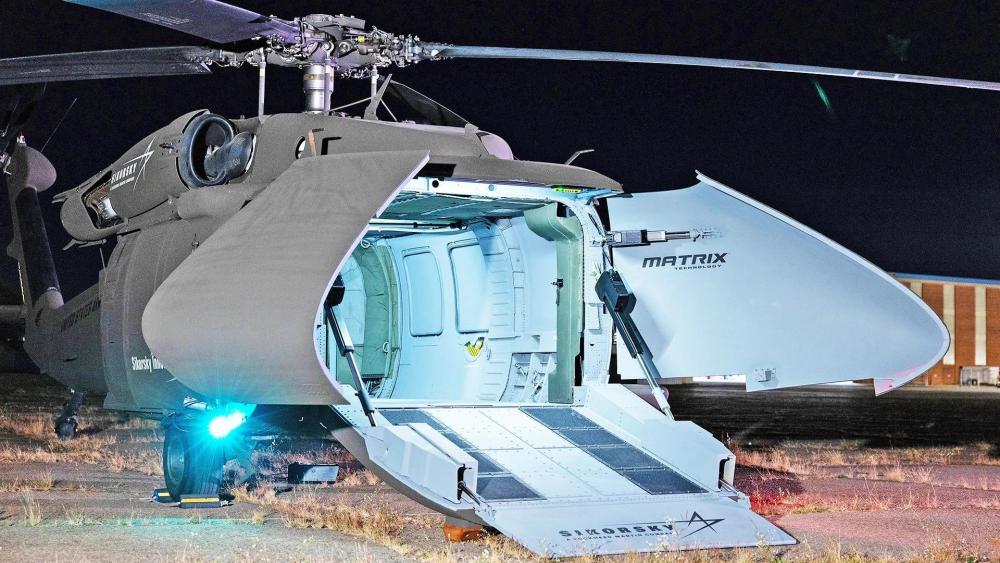Everything posted by M2
-
Foreign military student
OK, I went a little AI-crazy on this one, but here ya go... Yes, non-U.S. citizens can join the U.S. Air Force, but only under specific conditions. Here's a breakdown of the eligibility requirements: Lawful Permanent Residents (Green Card holders) are eligible to enlist in the Air Force and other branches of the U.S. military. You must have a valid I-551 (Green Card) with at least two years remaining before expiration. You must reside in the United States. You must have no pending deportation proceedings. You must meet the same age, education, physical fitness, and moral character standards as U.S. citizens. Dual citizens must renounce their foreign citizenship and surrender foreign passports to enlist. You must be a U.S. citizen to become an officer in the Air Force. Some military occupational specialties and security clearance positions are restricted to U.S. citizens. As of the latest update, the maximum age to commission as an officer in the U.S. Air Force is 42 years old for both active-duty and Space Force applicants. However, to become a pilot in the U.S. Air Force, you must begin pilot training before your 33rd birthday. To become a pilot in the U.S. Air Force, you must also be a U.S. citizen. This is non-negotiable due to the need for security clearances. Serving in a foreign military does not automatically disqualify you, but it may raise concerns related to: Security clearance eligibility Foreign allegiance or obligations Potential conflicts of interest During peacetime you must serve at least one year honorably in the U.S. military before applying for naturalization under Section 328 of the Immigration and Nationality Act (INA). Military applicants benefit from fast-tracked naturalization, often completing the process in 4 to 6 months. Some service members have received citizenship within weeks or months of enlisting, depending on their paperwork and USCIS processing speed. So there is a "chance," but exactly what odds you have are for you to determine...and even for US citizens, becoming a fighter pilot is a roughly 3 out of every 1,000 applicants (0.3%) chance. It depends on... U.S. citizenship Bachelor’s degree AFOQT and TBAS scores Medical clearance (IFC1) Begin pilot training before age 33 Excellent physical fitness and vision Good luck!
-
Gun Talk
Bleh. I carried a Glock while deployed to Bosnia, and was a fan until I retired in 2006 and discovered the then-new and superior Springfield XD line. Honestly, Glock's kowtowing to new California legislation makes me like them even less. I get California is the third-largest gun market in the U.S.; but Glock is the only manufacturer so far to publicly announce a redesign, launching its “V Series” pistols to comply with AB 1127. I also get SIG Sauer and Smith & Wesson are not directly affected by the law as most of their pistols do not have the same vulnerability. But the California Rifle & Pistol Association says AB 1127 is a “backdoor ban” on striker-fired pistols and warns that it could impact a wide range of models sold in California, not just Glocks; yet instead of fighting it, Glock capitulated early to beat the rush (and here I thought they were Austrian, not French!). Bleh.
-
UH-60 Black Hawk Cargo Drone (U-Hawk)
If anyone was wondering why the U.S. Army plans to cut 6,500 aviation jobs from the active duty ranks over the next two years, here's your answer! UH-60 Black Hawk Cargo Drone With Clamshell Nose Breaks Cover The new U-Hawk can lug thousands of pounds of cargo internally that would never fit in a standard Black Hawk, and launch scores of its own drones and munitions. Sikorsky has unveiled a new, fully uncrewed version of the Black Hawk helicopter with a completely transformed front end that swaps out the cockpit for clamshell doors. Depending on how it is configured, what has been dubbed the U-Hawk can move thousands of pounds of outsized cargo internally and slung underneath, deploy uncrewed ground vehicles, and fire dozens of “launched effects” like surveillance and reconnaissance drones and loitering munitions. A U-Hawk demonstrator, converted from an ex-U.S. Army UH-60L, is on display at the Association of the U.S. Army’s (AUSA) main annual conference in Washington, D.C., which opened today and at which TWZ is in attendance. Sikorsky, now a Lockheed Martin subsidiary, also refers to the design as the S-70 Unmanned Aircraft System (UAS), with S-70 being the company’s internal model number for H-60 variants. “A lot of our customers said, hey, I need to be able to move things into theater, and I need to be able to move them in mass. And a lot of the drones out there may be able to carry 100 pounds, may be able to carry 500 pounds,” Rich Benton, Sikorsky Vice President and General Manager, told TWZ and other outlets during a press call earlier this month. “We look introspectively, what do we have? Well, we actually have an autonomous Black Hawk today, our OPV, optionally piloted. But why couldn’t we just take the cockpit out of that and make that a UAS?”... Full story: https://www.twz.com/air/uh-60-black-hawk-cargo-drone-with-clamshell-nose-breaks-cover
-
College Football
Add Napier to that list! Complete BS.
-
The Next President is...
I'm sure Biff-T will call 'dibs' on her; but until she repeals the NFA and CGA, she's been a lame duck AG!
-
The Next President is...
I can't speak for any other states, but I do have good insight into the Texas Military Department and the TAG, and can attest this deployment will have practically zero impact on servicemember's civilian employment here. I've had people deployed for Operation LONE STAR - BORDER SURGE for four years, and all are successfully returning to their jobs. If it is a cause Texans believe in, they will support it to their dying breathe! It's our in our culture, history and mindset!
-
The Next President is...
Just to clarify, these are STATES that have Constitutional Carry and yes, I do believe exercising one's God-given right to self-defense reduces crime rates! But are the mayors the cause of crime, or is it simply that people who vote for red candidates then to be the same ones who commit the crimes? 2/3rds of the 100 largest U.S. cities have Democratic mayors, and urban areas consistently have the highest crime rates, both violent and property-related, over suburban/rural areas. So, while there is a political tie here, it's not the one driving the need for increased security. By the way, both Dallas and Fort Worth (they are two separate cities!) have Republican mayors! Eric Johnson of Dallas serves a population of 1.3M, and Mattie Parker of Fort Worth around 956,000. Ironically, Johnson switched from Democrat to Republican in 2023! I was up in the DFW/Arlington area in late June/early July, and while not a garden spot, the law and order there seemed far more effective than what I experienced in Baltimore last month!
-
The Next President is...
- Commanders are dropping like flies this year
What commander's call isn't a huge waste of time, yet they still continue to happen? Not saying this was cost effective, but when has that mattered in the DoD/DoW? I recognized an Army four star in attendance who retired the next day. Not judging, just some observations...and honestly it's not worth debating!- Gun Talk
Unfortunately, you were already in violation of Title 39 of the Code of Federal Regulations, Section 232.1 (also 39 CFR § 232.1) which states "no person may carry or store firearms, explosives, or other dangerous or deadly weapons on USPS property, either openly or concealed, except for official purposes." This includes vehicles parked on postal property. Unlike 18 U.S. Code §930, which prohibits carry in Federal facilities, the CFR covers "any portions of real property, owned or leased by the Postal Service, that are leased or subleased by the Postal Service to private tenants for their exclusive use" https://www.law.cornell.edu/cfr/text/39/232.1 I got into a debate with the owner of the Rio Medina General Store who felt because they leased a small section in the back to the USPS, the entire property fell under this regulation. She was wrong. Luckily, local police don't enforce Federal laws; it would most likely require a Postal Inspector and they are rare birds to see in the wild! I am glad a court finally addressed this unconstitutional restriction, it will be interesting to see how quickly the correction is implemented (already doubtful) especially consider the shutdown that started today...- German Chicks in Dirndls and Beer (NSFW)
- German Chicks in Dirndls and Beer (NSFW)
- History Friday
I'll be "incommunicado" for the rest of the week, so posting today...- Flying Videos Thread Part 2?
Excellent choice in music as well!! 🎸🎸- Finally done in Afghanistan?
Well, for one, that would give us a chance to get back the $7 to $10 billion worth of US military equipment left in Afghanistan following the chaotic withdrawal in August 2021 thanks to Biden!! 78+ aircraft, including helicopters and fixed-wing planes 12,000+ Humvees 42,000+ trucks Up to 22,000 additional vehicles including armored units Over 350,000 rifles and small arms 64,000+ machine guns 126,000+ pistols Nearly 200 artillery units Night vision gear Surveillance and biometric devices Explosive ordinance disposal tools Communications and encryption systems The Taliban has reportedly repaired and showcased some of the aircraft and vehicles in parades, and has even sold weapons to countries like Russia, Iran, North Korea, and China! Now tell me again which was the more inept Commander in Chief?!?- German Chicks in Dirndls and Beer (NSFW)
FRA is your problem, you want MUC!! I recommend the Sixt rental car desk, the ladies always dress up for Oktoberfest!! 😍😍- Gun Talk
- China & Chinese Shenanigans
On 3 September 2025, China organized a large-scale military parade to commemorate the 80th anniversary of the victory in the Chinese People's War of Resistance against Japanese Aggression and the World Anti-Fascist War (“V-Day”). The parade displayed a wide array of People’s Liberation Army (PLA) forces, weapons, unmanned systems, and other equipment. As described by a state news broadcast, the featured “unmanned intelligence systems, underwater combat units, cyber and electronic forces, and hypersonic weapons,” as well as “the latest generation of conventional weapons,” highlight the “PLA’s growing capacity to harness emerging technologies, adapt to the evolving character of warfare, and prevail in future conflicts.” Notable features of the 2025 V-Day parade include: --- Longer but less dense format except in key areas (namely, unmanned systems) --- Personnel from the aerospace, cyberspace, information support, and militia forces --- Representation of forces for global power projection --- Cyber warfare, electronic warfare, and information support equipment --- Many newly revealed unmanned platforms, particularly for aerial operations --- China’s nuclear triad, shown together for the first time --- Prominence of laser weapons and (at least one reported) anti-satellite weapon In these and other ways, the military parade signals China’s rapid and ongoing investment in new military capabilities. These platforms very likely reflect perceptions among the leadership in Beijing that China must be capable of prevailing not just in homeland defense and regional conflict — such as over Taiwan — but in securing its interests worldwide when necessary. It is unlikely that China pursues state-of-the-art weapons systems (like aircraft carriers) and world-class military status mainly for prestige (though that is very likely a part of China’s motivation as well). However, the presentation of these platforms does not have particular value for assessing the PLA’s actual combat and joint operations capability now or in the future.- German Chicks in Dirndls and Beer (NSFW)
- College Football
You'll not get an argument from me. UF could have won that game, despite the poor officiating. I think Lagway may be injured and Billy is letting him play, there's no other explanation as to why he's become such a horrible quarterback this year. LSU is overrated.- German Chicks in Dirndls and Beer (NSFW)
- The Next President is...
The Trump administration offered justifications for why it carried out a lethal strike against the drug boat instead of just interdicting it and arresting those on board. Secretary of State Marco Rubio said previous U.S. interdiction efforts in Latin America failed to stop the flow of drugs. “What will stop them is when you blow them up, when you get rid of them,” Rubio said on a visit to Mexico. Earlier in the day, Trump said he was sending a message to the cartels. “On the boat there were massive amounts of drugs,” the president told reporters in the Oval Office. “We have tapes of them speaking. There was massive amounts of drugs coming into our country to kill a lot of people, and everybody fully understands it. But you see it, you see the bags of drugs all over the boat, and they were hit. Obviously they won’t be doing it again. And I think a lot of other people won’t be doing it again. When they watch that tape, they’re going to say, ‘Let’s not do this.'”- The Next President is...
Deadly Airstrike On Cartel Boat Signals Major Shift In U.S. Drug Interdiction Strategy The U.S. will continue to carry out lethal attacks against people belonging to drug cartels designated as narco-terrorists, U.S. Defense Secretary Pete Hegseth said this morning. His comments came a day after the U.S. made a deadly strike on what President Donald Trump said was a drug boat operated by the Tren de Aragua (TDA) cartel, which is closely tied to Venezuelan dictator Nicolas Maduro. “It won’t stop with just this strike,” Hegseth told Fox News about the attack he said is a “very clear” message to the cartels. “Anyone else trafficking in those waters who we know is a designated narco-terrorist will face the same fate. It’s important to the American people to protect our homeland and protect our hemisphere.”... (Full article at title link) A lot of people sharing their opinions on this op...- German Chicks in Dirndls and Beer (NSFW)
- Commanders are dropping like flies this year
Account
Navigation
Search
Configure browser push notifications
Chrome (Android)
- Tap the lock icon next to the address bar.
- Tap Permissions → Notifications.
- Adjust your preference.
Chrome (Desktop)
- Click the padlock icon in the address bar.
- Select Site settings.
- Find Notifications and adjust your preference.
Safari (iOS 16.4+)
- Ensure the site is installed via Add to Home Screen.
- Open Settings App → Notifications.
- Find your app name and adjust your preference.
Safari (macOS)
- Go to Safari → Preferences.
- Click the Websites tab.
- Select Notifications in the sidebar.
- Find this website and adjust your preference.
Edge (Android)
- Tap the lock icon next to the address bar.
- Tap Permissions.
- Find Notifications and adjust your preference.
Edge (Desktop)
- Click the padlock icon in the address bar.
- Click Permissions for this site.
- Find Notifications and adjust your preference.
Firefox (Android)
- Go to Settings → Site permissions.
- Tap Notifications.
- Find this site in the list and adjust your preference.
Firefox (Desktop)
- Open Firefox Settings.
- Search for Notifications.
- Find this site in the list and adjust your preference.




















































































